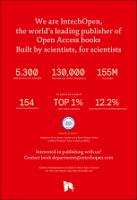Chapter Nanotoxicity in cancer research: technical protocols and tips considerations for the use of 3D tumour spheroids
Author(s)
Movia, Dania
Prina-Mello, Adriele
Language
EnglishAbstract
The poor clinical translation of oncological nanomedicine products is one of the greatest challenges faced by research today. The use of reductionist in vitro models of human cancer and non-predictive animal models is generally considered as one of the main causes of such very low translation rate. The integration of three-dimensional (3D) tumour spheroids in the early stages of the preclinical screening pipeline could significantly facilitate the translation of nanomedicine candidates into clinical practice, by allowing for a more reliable prediction of their efficacy and safety in humans. To lead a successful integration of 3D spheroids, protocols that satisfy issues of ease-of-use, reproducibility and compatibility with conventional and high-throughput assays, without losing the advantages offered by two-dimensional (2D) cell systems, are still needed. To address such need, protocols for the formation and characterisation of scaffold-free 3D tumour spheroids of human adenocarcinoma cells were developed and optimised in this study for their application in nanomedicine safety testing. The protocols reported in this chapter provide the ground on how 3D tumour spheroids could be implemented to design nanomedicine products and speed up experimental cancer research, eliminating those candidates that are likely to be ineffective or unsafe in human at early development stages.
Keywords
3D tumour spheroids, lung cancer, drug discovery, nanomedicine, safetyDOI
10.5772/intechopen.69447Publisher
InTechOpenPublisher website
https://www.intechopen.com/Publication date and place
2018Classification
Nanotechnology


 Download
Download